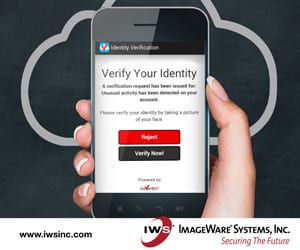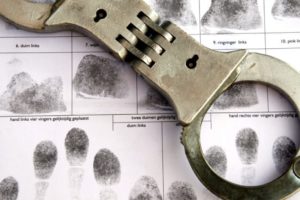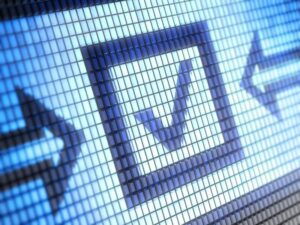 Thanks to the mainstream biometrics boom that followed in the wake of Apple’s Touch ID announcement in 2013, mobile biometric technology has a reputation of being primarily focused on consumer markets. Smartphones, wearables, tablets, PCs and mobile wallets are the popular face of mobile identity, but they are far from the whole story. The mobile biometric revolution has been underway across the identity industry as a whole, bringing convenient strong authentication and identification to the vertical markets.
Thanks to the mainstream biometrics boom that followed in the wake of Apple’s Touch ID announcement in 2013, mobile biometric technology has a reputation of being primarily focused on consumer markets. Smartphones, wearables, tablets, PCs and mobile wallets are the popular face of mobile identity, but they are far from the whole story. The mobile biometric revolution has been underway across the identity industry as a whole, bringing convenient strong authentication and identification to the vertical markets.
This week, as part of Mobile Identity Month here at FindBiometrics, we are going to look at three examples of mobility converging with biometrics outside of the consumer sphere.
Law Enforcement
 Mobile biometrics and law enforcement have a long history. The Squad Car Identification Device (SQUID), which has been credited as one of the first mobile fingerprint devices put to use, was commissioned in 1995 by Harris Corporation to be built by Digital Biometrics, Inc. The goal was to allow law enforcement officers to scan a subject’s fingerprints while in the field and determine whether she had any outstanding arrest warrants. It was big and bulky, but it was also more convenient than the old fashioned way.
Mobile biometrics and law enforcement have a long history. The Squad Car Identification Device (SQUID), which has been credited as one of the first mobile fingerprint devices put to use, was commissioned in 1995 by Harris Corporation to be built by Digital Biometrics, Inc. The goal was to allow law enforcement officers to scan a subject’s fingerprints while in the field and determine whether she had any outstanding arrest warrants. It was big and bulky, but it was also more convenient than the old fashioned way.
Now, 20 years after the SQUID’s conception, mobile biometrics for law enforcement have come a long way. Some police forces, like the NYPD, use smartphones for in-the-field biometric collection, but it is also common to see specialized handheld gear and software deployed in the line of duty. An example of both paradigms can be seen in the newly announced DigitalPersona Mobile ID and DigitalPersona Commander from Crossmatch, which were both unveiled at this week’s International Association of Chiefs of Police conference.
DigitalPersona Mobile ID is an Android app that allows for handheld devices to be used for in-the-field biometric identification, potentially opening up the possibility of a BYOD-style of law enforcement ID. Meanwhile, the DigitalPersona Commander is a device management platform that can administer specialized devices like the Crossmatch Verifier Sentry – an award winning multimodal biometric identification device for law enforcement.
Voter ID
 When it comes to national biometric enrollment efforts, a major challenge is presented when considering the inclusion of people who live in remote or rural areas. Having enrollment centers in government offices, or majorly trafficked urban areas such as shopping malls, presents a great way to collect biometric data on city dwellers, but it’s not so easy when it comes to citizens outside of metropolises. Thankfully, mobile biometric readers are able to help in this manner, and are being used in the Philippines for just that reason.
When it comes to national biometric enrollment efforts, a major challenge is presented when considering the inclusion of people who live in remote or rural areas. Having enrollment centers in government offices, or majorly trafficked urban areas such as shopping malls, presents a great way to collect biometric data on city dwellers, but it’s not so easy when it comes to citizens outside of metropolises. Thankfully, mobile biometric readers are able to help in this manner, and are being used in the Philippines for just that reason.
October 31 is the national deadline for citizens of the Philippines to register their biometrics for the upcoming 2016 federal election, and if that deadline is missed then it’s tough luck for truant lovers of democracy. As the slogan in the region goes, “No Bio, No Boto” (no biometrics no vote).
Of course, no amount of catchy slogans (and there have been many) will change the fact that, for some remote citizens, it is incredibly difficult to make it to a localized enrollment center. And so, in a last effort to enroll everyone, the Philippines commission on elections has deployed mobile biometric readers to be taken to the rural residents of the country.
Disaster Response
 When disaster strikes, identification plays an important role. Being able to positively identify victims of a large scale tragedy can help bring peace of mind to mourning families, while bringing a fuller picture of the event into focus. While a number of techniques have been employed in identifying fallen victims of major disasters – such as X-ray or DNA matching – mobile biometrics are starting to play an increasingly important role.
When disaster strikes, identification plays an important role. Being able to positively identify victims of a large scale tragedy can help bring peace of mind to mourning families, while bringing a fuller picture of the event into focus. While a number of techniques have been employed in identifying fallen victims of major disasters – such as X-ray or DNA matching – mobile biometrics are starting to play an increasingly important role.
Last December AirAsia Flight QZ8501 went missing enroute from Surabaya, Indonesia, to Singapore, and was found shortly thereafter in the waters south of Borneo. All 162 passengers died in the tragedy. Mobile biometric technology helped identify the fallen travelers quickly thanks to Indonesia’s Automatic Fingerprint Identification System and mobile biometric devices like the Trident handheld reader from Credence ID.
The Trident was using the Mobile Automatic Multi-Biometric Identification System (MAMBIS), which Indonesian law enforcement officials say can produce 100 percent matches on victims whose fingerprints have not been damaged, while offering 60 percent accuracy with damaged samples.
Reporting on the disaster response, our sister site Mobile ID World posted:
“Underneath the tragedy and ensuing investigation efforts related to the AirAsia crash is the thankful fact that Indonesia benefits from an extremely comprehensive national ID database that includes the biographic and biometric data of nearly every one of the country’s 250 million plus citizens. A national registry, in tragic times like this, is helping identify bodies at a very fast pace thanks to mobile biometric readers like the Trident.”
*
Stay posted to FindBiometrics throughout October as we continue to bring you a featured examination of mobile identity. Follow us on Twitter and tweet using the hashtag #FBMobile during Mobile Identity Month to be a part of the conversation.
Mobile Identity Month is made possible by our sponsors ImageWare Systems, Inc. and Precise Biometrics.
—
October 28, 2015 – by Peter B. Counter


Follow Us